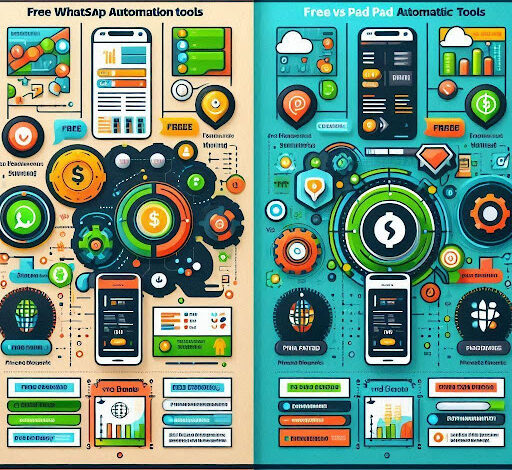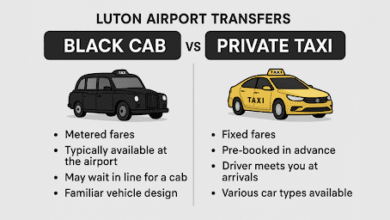Free vs paid WhatsApp automation tool: what to choose

You have 50+ unread WhatsApp messages. Some are hot leads, some are simple support questions, and all of them expect a fast reply. You know you need a WhatsApp automation tool, but the ‘free’ options look tempting. This choice, however, can’t be made just based on budget. You must also consider the scalability of your business.
For an entrepreneur, time is money, and your brand’s reputation is everything. A slow response is a lost sale. A banned number is a catastrophe.
Let’s be blunt: ‘free’ WhatsApp automation tools are a trap. They are a liability that introduces business-ending risks for a minor cost saving. This article will not give you a vague ‘it depends’ answer. We will show you precisely why a paid, official tool is the only strategic choice for a business that wants to grow.
The “free tool” trap: the hidden costs of ‘gratis’ automation
The true cost of a “free” tool is in the risks you accept and the opportunities you lose. This section directly addresses the biggest fear business owners should have: instability.
The core problem is that 99% of free tools are unofficial. They are not approved by Meta and rely on unstable, unauthorized methods to function. This is the root of all the problems that follow.
The #1 risk: the unofficial API and the permanent ban
This is the most critical, relevant point for any business owner. Most free tools operate by using “screen scraping.” This means they remotely control a phone’s WhatsApp Web session in a browser to send and receive messages. Others use reverse-engineered, “cracked” APIs.
Both methods are a direct and serious violation of Meta’s Terms of Service. It’s not a question of if your business will be discovered, but when. The platform’s algorithms are designed to detect and shut down non-human behavior originating from a standard account.
When you are caught, the consequence is a permanent ban. You lose your business number and your entire customer chat history. Your primary communication and sales channel disappears overnight.
Using official, approved tools allows you to engage with your audience safely. For example, you can securely send a broadcast message in WhatsApp to segmented lists of your customers without violating terms of service. Unofficial tools, however, make this basic marketing activity a high-risk gamble.
The hard ceiling of free: when your “solution” becomes the bottleneck
Even if you somehow avoid a ban, the free tool will fail the moment your business achieves mild success. It’s a bottleneck disguised as a solution.
The first failure point is team access. Most free tools are tied to one phone and one WhatsApp Web instance. The moment you hire a salesperson or support agent, the system breaks. Your whole team tries to log in, and it’s chaos. Leads are dropped because no one knows who answered what.
The second failure point is data. You can’t connect these tools to your CRM (like HubSpot or Salesforce) or your e-commerce platform (like Shopify). Your sales data is siloed on one person’s phone. It’s a data-management nightmare that makes tracking your sales funnel impossible.
True automation strategies often involve multiple channels working together. Many businesses look for Instagram DM automation as well, and official platforms are built to handle this. Free, unofficial tools will never offer this kind of cross-platform, integrated capability.
Finally, the automation itself is “dumb.” Free tools offer simple keyword replies, like “Press 1 for hours.” They cannot handle complex, multi-step sales funnels, lead qualification, or abandoned cart recovery.
Paid tools: the strategic shift from “tool” to “business asset”
This is where we redefine “paid” as an “investment in infrastructure.” The key differentiator is the Official WhatsApp Business API.
Paid tools from approved vendors are a completely different category of product. They are Official Business Solution Providers (BSPs) approved by Meta.
This status means stability, scalability, and zero risk of being banned for using the tool as intended. It’s the only way to build a long-term strategy on the platform, turning your WhatsApp channel from a manual chore into a scalable business asset.
The ROI of the official API: scaling sales and support 24/7
Forget a simple list of features. When you invest in an official WhatsApp automation tool, you are buying specific business outcomes.
The first outcome is that you will never lose a lead in a cluttered inbox again. Official tools provide a shared team inbox. Multiple salespeople and support agents can access the same number. Conversations can be assigned, tagged, and tracked like a professional help desk.
This is amplified by CRM Integration. When a new lead messages you, their contact is automatically created in your CRM. Follow-ups can be scheduled, and their entire conversation history is logged. The sales funnel is automated, not a manual data-entry task.
The second outcome is the ability to build a real, automated funnel. Using visual flow builders, you can design complex logic: “If user says X, send Y, wait 2 days, then send Z.” This is a level of sophistication free tools can only dream of.
This is how you automate lead nurturing, recover abandoned carts, and send post-purchase upsells at scale. It’s a system that works for you 24/7, qualifying leads and closing sales even when you’re not online.
The third outcome is Brand Trust. Only businesses using the official API can apply for the Green Tick (Official Business Account). This badge is massive social proof. It tells customers you are a legitimate, verified entity, which instantly increases trust and conversion rates.
The decisive factor: how to choose the right paid tool
Not all paid tools are created equal, even if they use the official API. This provides actionable value and shows you’re not just “selling,” you’re “advising.” Here is an action plan.
Don’t just look at the price. Ask vendors these non-negotiable questions to protect your investment and ensure you’re choosing a partner for growth.
Start with the most important question: “Are you an official Meta Business Solution Provider (BSP)?” If they hesitate, or say “we use the web version,” run. They are just a prettier, paid version of the high-risk “free” tools.
Next, ask: “What is your pricing model?” You need to understand the difference. Meta charges BSPs per-conversation (in 24-hour windows). Some vendors pass this cost on directly, while others charge a flat per-seat or per-agent fee. Model which one makes sense for your business volume.
Then, demand: “Show me your native integrations.” Don’t accept “We can connect with Zapier” as the primary answer. Zapier is a good backup, but you want native integrations with Shopify, HubSpot, Salesforce, and other core tools. This is a huge differentiator for reliability and power.
Finally, ask: “What does your support look like?” When your main sales channel goes down, you cannot wait 48 hours for an email ticket. You need instant, expert help from people who understand the API.
From liability to asset: making the right choice
The choice is not really ‘free vs. paid’, but ‘high-risk, low-scalability’ versus ‘secure, high-growth infrastructure.’ A free WhatsApp automation tool is a gamble with your most valuable asset: your customer relationships.
For the serious entrepreneur, the ‘cost’ of a free tool—a potential ban, lost leads, and integration chaos—is far too high to justify the minor savings.
The ‘price’ of a paid, official API tool is not an expense. It is an investment in a scalable, compliant, and powerful sales and support engine for your business.
Stop putting your business at risk. Start evaluating official WhatsApp Business API providers today and ask them the hard questions we outlined. Your future growth depends on it.



